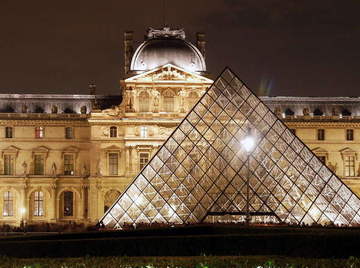The Louvre is once again claiming the title as most-visited art museum in the world. On Monday, when most eyes here in the U.S. art world were aimed at the West Coast, the Louvre (below) announced that 8.5 million people passed through its doors in 2009. That’s the same as last year, and the fourth year in a row the total has topped 8 million.
 The Metropolitan Museum of Art, according to an article in the U.K. Independent, also achieved the same total as last year — about 4.8 million. But attendance at the world’s second most popular museum, the British Museum, dropped in 2009 — to almost 5.6 million, from more than 5.9 million in 2008. (In 2008, two other museums outranked the Met: the National Gallery in Washington ranked third with more than 4.96 million and the Tate Modern in London came in fourth with 4.95 million — leaving the Met in fifth place worldwide. They haven’t reported their numbers for 2009.)
The Metropolitan Museum of Art, according to an article in the U.K. Independent, also achieved the same total as last year — about 4.8 million. But attendance at the world’s second most popular museum, the British Museum, dropped in 2009 — to almost 5.6 million, from more than 5.9 million in 2008. (In 2008, two other museums outranked the Met: the National Gallery in Washington ranked third with more than 4.96 million and the Tate Modern in London came in fourth with 4.95 million — leaving the Met in fifth place worldwide. They haven’t reported their numbers for 2009.)
What does this mean for the rest of the museum world? I won’t be surprised if the pattern is more like the British Museum’s than the Louvre’s or the Met’s — with totals lower than last year.
Aside from my own anecdotal reporting, I base that on the numbers reported to The Art Newspaper in its December issue. The article said museum attendance here was on the rise, and the three-year-trend is up. But in many cases the actual numbers show that’s wishful thinking for 2009. Only the Art Institute of Chicago, with its new wing, and the Solomon R. Guggenheim Museum, with its exceedingly popular Kandinsky exhibit, are obviously having blockbuster years.
This is a dent to morale. Museums mounted a lot of great shows last year, planned before the recession began; 2010 offerings are looking a little less spectacular — and in many cases they are occupying galleries for longer periods of time.
So I think museums should brace for another difficult year, on several fronts — not just in attendance. Two recent surveys showed that consumer confidence remains low: the index for the “current situation” is at a 26-year low; another confidence survey dipped in January after rising slightly in December. People aren’t planning to return to previous spending levels — memberships may be expendable. Bloomberg, tallying a group of economic projections into a consensus forecast, suggests that the U.S. GDP is likely to expand by 2.6% this year, but philanthropy tends rise long after the economy starts to climb.
The upside, if there is one, is that the art market also lags the economy. If museums have money — or willing donors — this would be a year to buy.
